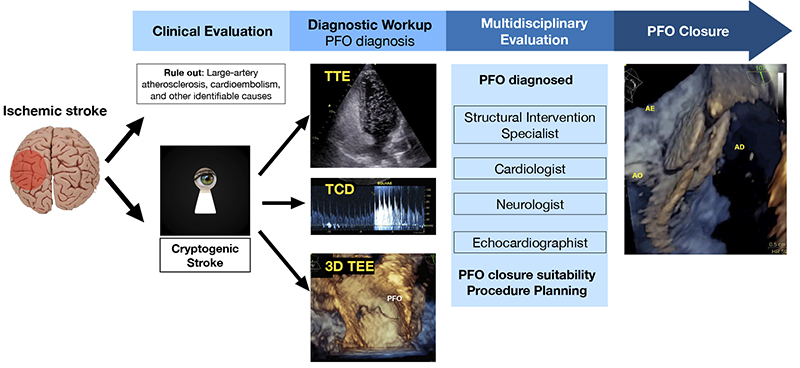Volume 33, Nº 4, Julho e Agosto 2020
DOI: https://doi.org/10.36660/ijcs.20200128
EDITORIAL
To Close or not to Close PFOs in Cryptogenic Stroke, an Evolving Question
Alex Felix
Monica Luiza de Alcantara

Figure 1 – Flowchart of PFO closure in cryptogenic stroke. PFO = patent foramen ovale, TTE = Transthoracic echocardiogram, TCD = transcranial Doppler, 3D TEE = three-dimensional transesophageal echocardiogram
A matter of intense debate in the last decades, the ideal strategy for secondary prevention in patients with cryptogenic stroke and patent foramen ovale (PFO) is not yet clearly defined. PFOs are prevalent in the general population and can be found in up to 40% of patients with cryptogenic stroke.1 Although in some cases of cryptogenic stroke PFO might be just an innocent bystander, paradoxical embolism is a wellknown potential causative mechanism, especially in patients with concomitant deep venous thrombosis, whereby PFO closure may represent an effective measure to avoid recurrences.2 Even among patients with PFO, phenotypical heterogeneity may also determine percutaneous treatment suitability and directly impact on results, whereas the presence of large shunts, atrial septal aneurysm or associated complex septal defects must also be taken into account.
Keywords: Patent Foramen Ovale; Secondary Prevention; Stroke/ prevention and control; Risk Factors; Atrial Fibrillation.











